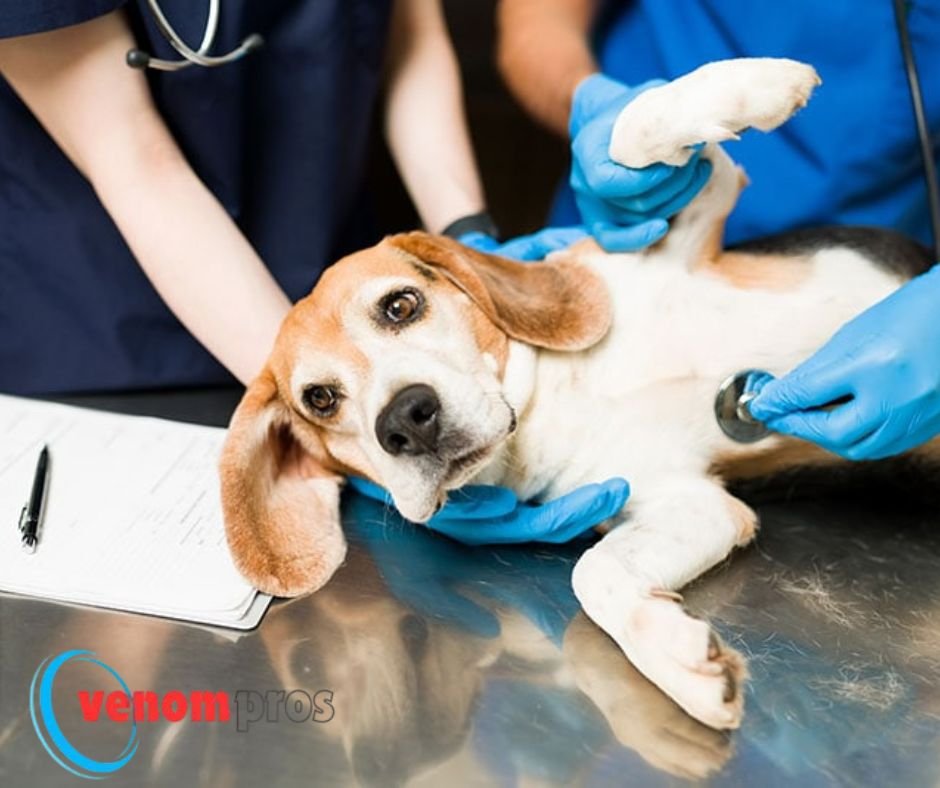
**Dog Venoms: A Hidden Threat in Canine Encounters**
In the world of canine health and safety, the term “dog venom” might evoke images of wild creatures or exotic pets, but it’s a reality for a variety of domestic dogs as well. While most people consider dogs to be friendly and safe companions, there are hidden dangers in certain dog species that produce venom, making dog bites potentially more hazardous than one might expect. Understanding dog venoms, their effects, and how to handle encounters involving venomous dogs is crucial for pet owners, veterinarians, and the public. This article explores the often-overlooked topic of dog venoms, examining the types, effects, and preventive measures associated with them Dog Venoms.
The Nature of Dog Venoms
While dogs are not typically classified as venomous in the same sense as snakes or spiders, certain species possess venomous attributes. For instance, some breeds have evolved to produce toxic substances, often as a defence mechanism or as part of their predatory skills. These venoms can be delivered through bites or stings and can cause serious health issues if not properly managed.
Types of Venomous Canines
1. Pit Vipers and Canine Species
Certain wild canines, such as those found in remote regions, may exhibit venomous traits. However, the most well-documented cases involve specific breeds of domestic dogs with venomous capabilities. For example, some dog breeds, like the Australian Cattle Dog, have been reported to have venomous bites due to their aggressive nature and unique biological adaptations Dog Venoms.
2. Salivary Venoms
Some dogs have venomous salivary glands that release toxins into their bite. This is not as common as other venomous animals but can occur in specific breeds. The venom in their saliva can cause localized pain, swelling, and infection. Understanding these mechanisms is crucial for effective treatment and preventioz in Dog Venoms.
Effects of Dog Venoms
The effects of venom from a dog bite can vary significantly based on the type of venom, the amount injected, and the victim’s overall health. While not all dog bites involve venom, when they do, the symptoms can be severe and include:
1. Localized Reactions
The most immediate effect of a venomous dog bite is localized pain and swelling. This is a result of the toxins interacting with the tissues around the bite site. In some cases, blisters or necrosis can develop, indicating severe tissue
damage.
**2. Systemic Reactions**
Severe reactions can lead to shock, respiratory difficulties, and even organ failure in extreme cases. Prompt medical attention is crucial to managing systemic symptoms in Dog Venoms.
3. Infection Risks
Beyond the immediate effects of venom, dog bites also carry a risk of infection. Bacteria from the dog’s mouth can enter the wound, leading to conditions like cellulitis or abscesses. The combination of venom and bacterial infection can significantly complicate treatment and recovery.
Prevention and Treatment
Preventing encounters with venomous dogs involves understanding their behavior and taking appropriate precautions. Here are some strategies for minimizing the risk of venomous dog bites:
1. Proper Training and Socialization
Ensuring that dogs are well-trained and socialized from an early age can reduce aggressive behavior and the likelihood of venomous bites. Training helps dogs learn appropriate responses to humans and other animals
, decreasing the chances of defensive biting in Dog Venoms.
2. Avoiding Risky Situations
Avoiding interactions with dogs that display aggressive or unpredictable behavior is essential. If encountering wild or unfamiliar dogs, maintaining a safe distance and not provoking the animal is crucial. Understanding canine body language can help in
identifying signs of aggression or discomfort in Dog Venoms.
3. Protective Measures
For those who work with or interact frequently with dogs, wearing protective clothing such as gloves and long sleeves can offer some protection against bites. Additionally, carry
ing first aid supplies and knowing basic wound care techniques can be beneficial in the event of a bite in Dog Venoms.
Immediate Response to a Dog Bite
If bitten by a dog, especially one suspected of having venomous capabilities, prompt and appropriate action is vital:
1. Cleaning the Wound
Gently scrub the area to remove any venom and bacteria present in Dog Venoms.
2. Seeking Medical Attention
A healthcare professional can assess the severity of the bite, provide treatment for venom effects, and prescribe antibiotics if necessary to prevent infection in Dog Venoms.
3. Monitoring for Symptoms
Monitor the bite site and the victim’s overall health for any signs of worsening symptoms. Immediate medical intervention is necessary if systemic reactions occur, such as difficulty breathing, swelling beyond the bite area, or signs of shock in Dog Venoms.
The Role of Veterinarians
Veterinarians play a crucial role in managing and treating venomous dog bites. They can provide accurate diagnoses, administer antivenom if available, and offer supportive care to mitigate the effects of venom. Educating pet owners about the risks associated with certain breeds and proper care can also help prevent venomous encounters in Dog Venoms.
Conclusion
While the idea of dog venoms might seem like a rare or exotic concern, it’s an important topic for pet owners, veterinarians, and the public. Understanding the nature of dog venoms, recognizing the symptoms of venomous bites, and knowing how to prevent and treat these incidents are essential for ensuring safety and well-being. By being informed and prepared, we can better manage the hidden threats associated with canine encounters and safeguard both ourselves and our beloved pets in Dog Venoms.
Also read this;>Strategic Toxicologist for Health and Safety Compliance
Also read this;>6 Deadly Poisons That Could Kill Your Dog








